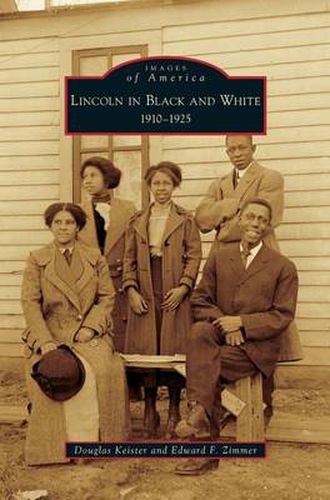Readings Newsletter
Become a Readings Member to make your shopping experience even easier.
Sign in or sign up for free!
You’re not far away from qualifying for FREE standard shipping within Australia
You’ve qualified for FREE standard shipping within Australia
The cart is loading…






This title is printed to order. This book may have been self-published. If so, we cannot guarantee the quality of the content. In the main most books will have gone through the editing process however some may not. We therefore suggest that you be aware of this before ordering this book. If in doubt check either the author or publisher’s details as we are unable to accept any returns unless they are faulty. Please contact us if you have any questions.
Lincoln, Nebraska’s capital, grew from 45,000 to 55,000 residents in the years 1910-1925. The state’s second-largest city, Lincoln was also home to Nebraska’s second-largest African American community–a small town within the midwestern city. Local race relations were a study in contradictions. Public education and residential neighborhoods were relatively integrated; employment and social institutions were increasingly restricted. Within this setting, a laborer named John Johnson–a native of Lincoln and son of a black Civil War veteran–produced remarkable images as an itinerant photographer of the Lincoln scene, especially of its black community. Johnson left very little written record, so knowledge is fragmentary of his working techniques and of his collaborators or assistants. But his visual legacy takes people through the streets, onto the front porches, and into the backyards and living rooms of a vibrant community.
$9.00 standard shipping within Australia
FREE standard shipping within Australia for orders over $100.00
Express & International shipping calculated at checkout
This title is printed to order. This book may have been self-published. If so, we cannot guarantee the quality of the content. In the main most books will have gone through the editing process however some may not. We therefore suggest that you be aware of this before ordering this book. If in doubt check either the author or publisher’s details as we are unable to accept any returns unless they are faulty. Please contact us if you have any questions.
Lincoln, Nebraska’s capital, grew from 45,000 to 55,000 residents in the years 1910-1925. The state’s second-largest city, Lincoln was also home to Nebraska’s second-largest African American community–a small town within the midwestern city. Local race relations were a study in contradictions. Public education and residential neighborhoods were relatively integrated; employment and social institutions were increasingly restricted. Within this setting, a laborer named John Johnson–a native of Lincoln and son of a black Civil War veteran–produced remarkable images as an itinerant photographer of the Lincoln scene, especially of its black community. Johnson left very little written record, so knowledge is fragmentary of his working techniques and of his collaborators or assistants. But his visual legacy takes people through the streets, onto the front porches, and into the backyards and living rooms of a vibrant community.